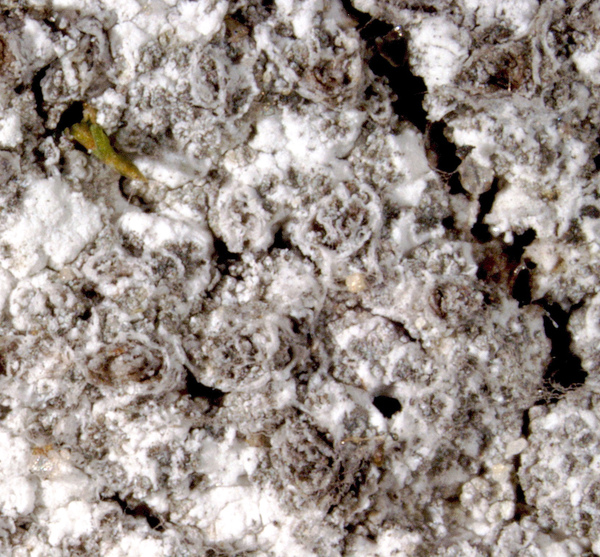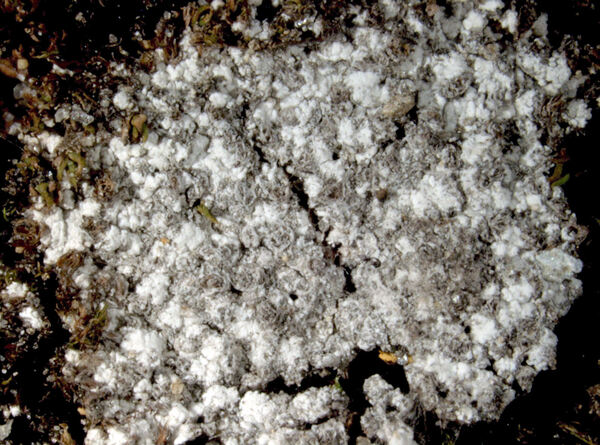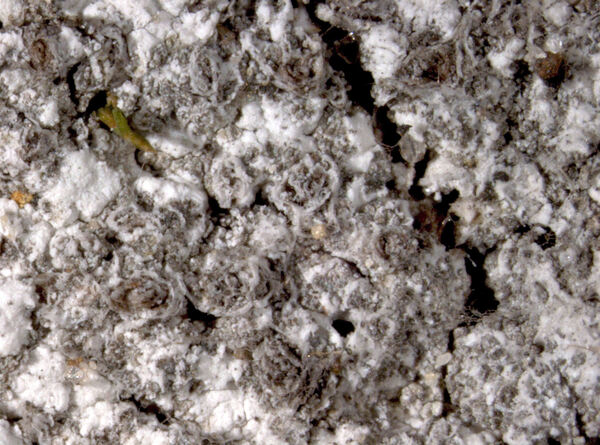Rinodina candidogrisea Hafellner, Muggia & Obermayer
Bibl. Lichenol., 108: 80, 2012.
Synonyms: Kudratovia candidogrisea (Hafellner, Muggia & Obermayer) S.Y. Kondr., Lőkös & Hur
Distribution: N - Frl (Hafellner & al. 2012), TAA (Hafellner & al. 2012), Piem (Hafellner & al. 2012).
Description: Thallus crustose, episubstratic, areolate, grey in central parts, white in peripheral parts, forming up to 3 cm wide patches, sorediate, the central areoles angular, contiguous, entirely sorediate, the marginal ones somewhat larger to thinly subsquamulose, with marginal soralia, the soredia grey, granular, 30-55 µm thick, without distinctly protruding hyphae under the dissecting microscope. Medulla white or rarely pale yellow. Apothecia very rare, lecanorine, 0.3-0.7 mm across, with a white-pruinose disc and a thick, pruinose, ecorticate thalline margin. Epithecium brown; hymenium colourless, up to 100 µm high; paraphyses sparingly branched in upper part, c. 2 µm thick at mid-level, with slightly larger apical cells surrounded by a brownish gel and oxalate crystals. Asci 8-spored, cylindrical-clavate, the K/I+ blue tholus penetrated by a faintly amyloid apical cushion with parallel or diverging flanks, the wall K/I-, surrounded by a K/I+ blue outer layer, Lecanora-type. Ascospores 1-septate, pigmented, ellipsoid, 23-28 x 10-12.5 µm, Physcia-type, with spore ontogeny of type A (apical wall thickening after septum formation). Photobiont chlorococcoid. Spot tests: cortex K-, C-, KC-, P-, UV+ whitish (especially the marginal areoles); medulla sometimes P+ faintly yellow (when white), K+ purple (when yellowish). Chemistry: zeorin and unknown fatty acids (in all samples), sometimes variolaric acid, and an unknown yellow pigment.Note: a recently-described, ornitocoprophilous, terricolous species growing on mosses and plant debris over calcareous substrata near and above treeline; probably more widespread in the Alps.
Growth form: Crustose
Substrata: soil, terricolous mosses, and plant debris
Photobiont: green algae other than Trentepohlia
Reproductive strategy: mainly asexual, by soredia, or soredia-like structures (e.g. blastidia)
Commonnes-rarity: (info)
Alpine belt: very rare
Subalpine belt: very rare
Oromediterranean belt: absent
Montane belt: absent
Submediterranean belt: absent
Padanian area: absent
Humid submediterranean belt: absent
Humid mediterranean belt: absent
Dry mediterranean belt: absent
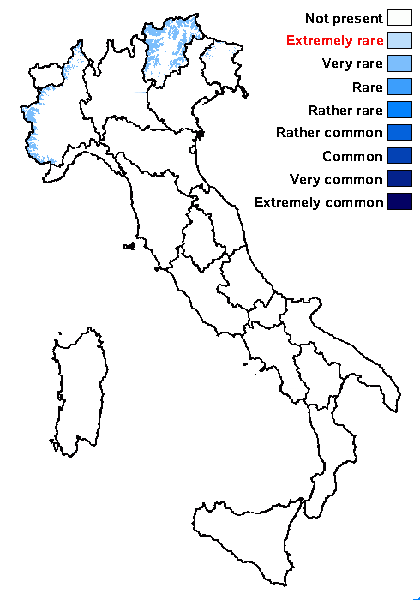
Predictive model
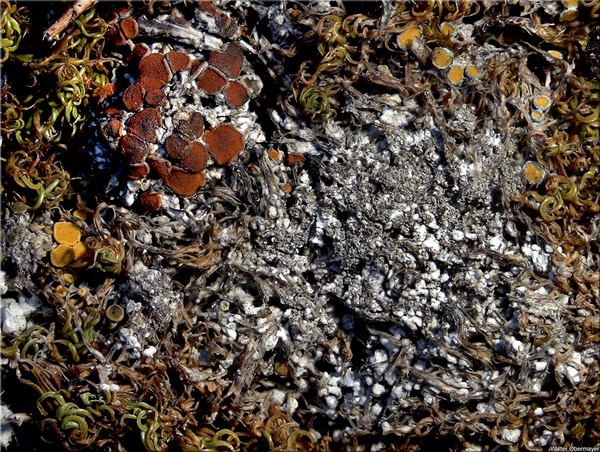
Walter Obermayer CC BY-SA 4.0 - Source: Lichens of Noricum - http://lichens-of-noricum.uni-graz.at/
Austria
HOLOTYPE - Hafellner 68273
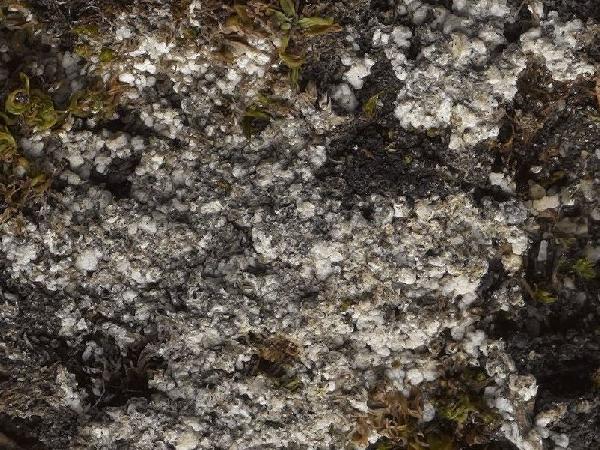
Modified from: https://gzu.jacq.org/GZU000283477
GZU000276491 - Hafellner,J. & Muggia,L. 70239 Date 2007-06-17 Austria / Steiermark — 46.81528° / 14.99167°
Label Steiermark: [Zentralalpen], Steirisches Randgebirge, Koralpe, Sattel zwischen Moschkogel und Hühnerstütze, etwas S über dem Sattel, c. 0.5 km E der Grillitschhütte ; Alt. 1760 m
Habitat Marmorausbisse am sanft geneigten N-Hang
im Bereich der Waldgrenze, auf Moosen und Pflanzenresten
Habitus
Annotations W. Obermayer (Graz) 2010-11: TLC 425-16: zeorin (maj.), variolaric acid, fatty acid ((2-)3/1-2/2(-3)), yellow pigment ((3-)4/2/3(-4)).
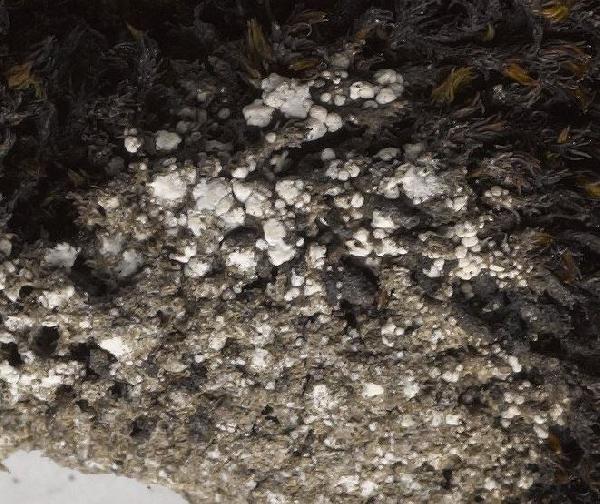
Modified from: https://gzu.jacq.org/GZU000283476
GZU000283476 - Hafellner,J. & Muggia,L. Austria / Vorarlberg — 47.04306° / 9.75278°
Label Vorarlberg, Rätikon, Hänge zwischen Lünersee und Gafalljoch, c. 14 km SSW von Bludenz, Geländerippe an den E-Abhängen der Kanzelköpfe, W gegenüber der Zollhütte ; Alt. 2150 m
Habitat kleine Kalkausbisse in Zwergstrauchreichen
Weiderasen, S-exponiert auf Moosen und Pflanzenresten
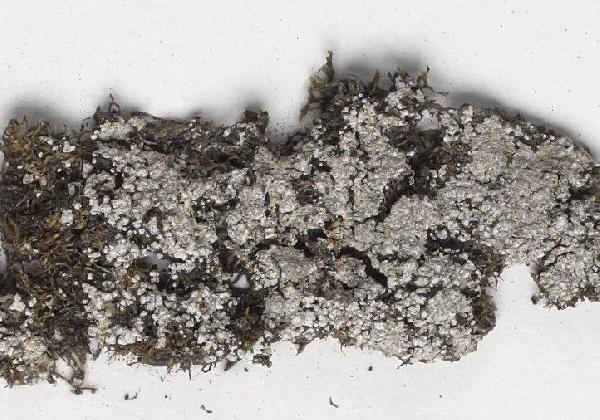
Modified from: https://gzu.jacq.org/GZU000283475
GZU000283475 - Hafellner,J. Germany / Bayern — 47.75556° / 12.36667°
Label Bayern (Bavaria), Nordalpen, Chiemgauer Alpen, Kampenwand, c. 22 km SE von Rosenheim, S über der Steinlingalm, im Gratbereich W unter dem Gipfelkreuz ; Alt. 1640 m
Habitat am S-Fuß der Abbrüche des Gipfelaufbaus, Triaskalk; auf Moosen und Pflanzenresten
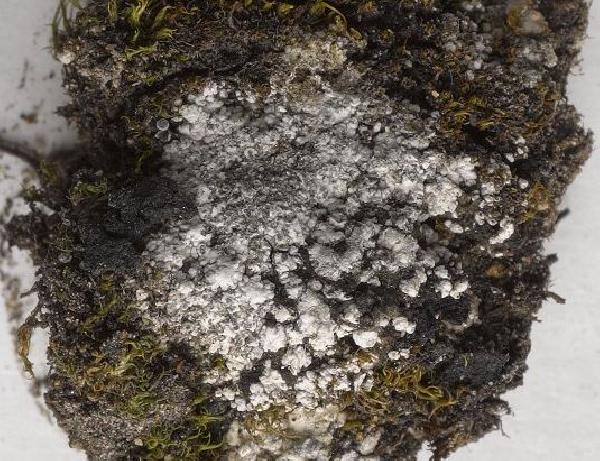
Modified from: https://gzu.jacq.org/GZU000283473
GZU000283473 - Hafellner,J. Italy / Trentino-Alto Adige — 46.60139° / 11.73472°
Label Trentino-Alto Adige, prov. Bolzano, Southern Alps, Dolomiti, M. Seceda (Geisler Spitzen) NE of Ortisei (St. Ulrich), on the ridge to W, above Forc Pana (Pana Scharte) ; Alt. 2500 m
Habitat low outcrops of limestone in alpine vegetation, on bryophytes and plant debris
Habitus
Annotations W. Obermayer (Graz) 2010-11: TLC 426-03 (marginal lobes, without soralia): zeorin, fatty acid ((2-)3/1-2/2(-3)).

Modified from: https://gzu.jacq.org/GZU000283471
GZU000283471 - Hafellner,J. Italy / Friuli-Venezia Giulia — 46.55972° / 13.29333°
Label Friuli - Venezia Giulia, Prov. Udine: Southern Alps, Carnic Alps, area of Passo Pramollo (Naßfeldpaß) ca. 6 km N of Pontebba, monte Carnizza (Garnitzenberg) E above the pass, limestone cliffs on the ridge W of the summit ; Alt. 1840 m
Habitat rocks of palaeozoic limestone, on plant remnants
Growth form: Crustose
Substrata: soil, terricolous mosses, and plant debris
Photobiont: green algae other than Trentepohlia
Reproductive strategy: mainly asexual, by soredia, or soredia-like structures (e.g. blastidia)
Commonnes-rarity: (info)
Alpine belt: very rare
Subalpine belt: very rare
Oromediterranean belt: absent
Montane belt: absent
Submediterranean belt: absent
Padanian area: absent
Humid submediterranean belt: absent
Humid mediterranean belt: absent
Dry mediterranean belt: absent

Predictive model

Walter Obermayer CC BY-SA 4.0 - Source: Lichens of Noricum - http://lichens-of-noricum.uni-graz.at/
Austria
HOLOTYPE - Hafellner 68273

Modified from: https://gzu.jacq.org/GZU000283477
GZU000276491 - Hafellner,J. & Muggia,L. 70239 Date 2007-06-17 Austria / Steiermark — 46.81528° / 14.99167° Label Steiermark: [Zentralalpen], Steirisches Randgebirge, Koralpe, Sattel zwischen Moschkogel und Hühnerstütze, etwas S über dem Sattel, c. 0.5 km E der Grillitschhütte ; Alt. 1760 m Habitat Marmorausbisse am sanft geneigten N-Hang im Bereich der Waldgrenze, auf Moosen und Pflanzenresten Habitus Annotations W. Obermayer (Graz) 2010-11: TLC 425-16: zeorin (maj.), variolaric acid, fatty acid ((2-)3/1-2/2(-3)), yellow pigment ((3-)4/2/3(-4)).

Modified from: https://gzu.jacq.org/GZU000283476
GZU000283476 - Hafellner,J. & Muggia,L. Austria / Vorarlberg — 47.04306° / 9.75278° Label Vorarlberg, Rätikon, Hänge zwischen Lünersee und Gafalljoch, c. 14 km SSW von Bludenz, Geländerippe an den E-Abhängen der Kanzelköpfe, W gegenüber der Zollhütte ; Alt. 2150 m Habitat kleine Kalkausbisse in Zwergstrauchreichen Weiderasen, S-exponiert auf Moosen und Pflanzenresten

Modified from: https://gzu.jacq.org/GZU000283475
GZU000283475 - Hafellner,J. Germany / Bayern — 47.75556° / 12.36667° Label Bayern (Bavaria), Nordalpen, Chiemgauer Alpen, Kampenwand, c. 22 km SE von Rosenheim, S über der Steinlingalm, im Gratbereich W unter dem Gipfelkreuz ; Alt. 1640 m Habitat am S-Fuß der Abbrüche des Gipfelaufbaus, Triaskalk; auf Moosen und Pflanzenresten

Modified from: https://gzu.jacq.org/GZU000283473
GZU000283473 - Hafellner,J. Italy / Trentino-Alto Adige — 46.60139° / 11.73472° Label Trentino-Alto Adige, prov. Bolzano, Southern Alps, Dolomiti, M. Seceda (Geisler Spitzen) NE of Ortisei (St. Ulrich), on the ridge to W, above Forc Pana (Pana Scharte) ; Alt. 2500 m Habitat low outcrops of limestone in alpine vegetation, on bryophytes and plant debris Habitus Annotations W. Obermayer (Graz) 2010-11: TLC 426-03 (marginal lobes, without soralia): zeorin, fatty acid ((2-)3/1-2/2(-3)).

 INDEX FUNGORUM
INDEX FUNGORUM
 GBIF
GBIF
 DOLICHENS
DOLICHENS
